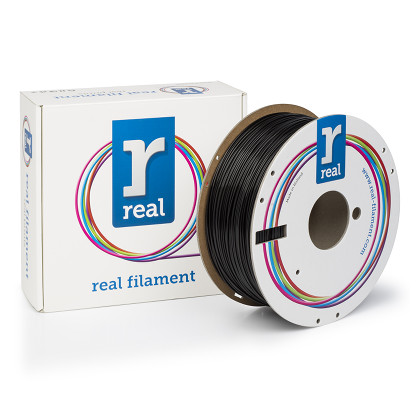PLA filament (Polylactic acid or polylactide)
PLA filament is suitable for almost any 3d print project

PLA (Polylactic acid or polylactide) is a hard thermoplastic, Fabricated from renewable sources (primarily corn starch), PLA filament has low shrinkage and a relatively low melting temperature of 175°C. It is an easy material to work with and to combine in various compounds, and remains the most popular material with which to print.
Diameter
| Diameter | Tolerance | Roundness |
|---|---|---|
| 1,75 mm | 0,05 mm | 95% |
| 2,85 mm | 0,1 mm | 95% |
Characteristics
| Physical characteristics | Test method | Typical value |
|---|---|---|
| Specific gravity | ASTM D1505 | 1,24 g/cc |
| MFI | - | 6,0g /10min |
| Tensile strength | ASTM D882 | MD 16kpsi / TD 21kpsi |
| Elongation at break | ASTM D882 | 160% (MD) 100% (TD) |
| Tensile modulus | ASTM D882 | 480 MPa (MD) 560 MPa (TD) |
| Impact strength | - | 2,5 joules |
Thermal characteristics
| Description | Test method | Typical value |
|---|---|---|
| Print temperature | - | 190 - 210 C |
| Melt temperature | - | 210 C +/- 8 C |
| Melting point | ASTM D3418 | 145-160 C |
| Vicat softening temperature | ISO 306 | +/- 60 C |
Packaging
All the filaments we sell are nicely boxed with usage and material properties printed directly on the inside cover, including the recommended print and heated bed temperature ranges. In addition, each spool is vacuum sealed with a moisture-reducing silicate bag to ensure filament longevity.
How to store the filament?
Filament quality and storage is one of the most important ingredient for beautiful prints. Many people focus strictly on the immediate appearance of a product and forget that a well-preserved spool is just as important. But is the biggest contribution to medium to long-term filament degradation? The answer is usually "moisture". Filament can't handle moisture very well and that is why we recommend storing your filament in a cool, dry environment, ideally in a package vacuum sealed with silicate.